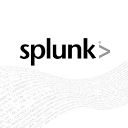Which software should you choose to monitor your IT infrastructure?
A disappointing user experience is often synonymous with negative repercussions for your business. Slowdowns, malfunctions and other security flaws are all threats to your business.
In order to anticipate and avoid these problems, server monitoring is one of the best practices to incorporate 👍.
Which software should you choose to carry out your monitoring correctly? This article introduces 7 of them.
But before delving into the nitty-gritty of the subject, let's go over a few basics.
What is server monitoring?
Server monitoring consists of continuously monitoring the state of your IT infrastructures to ensure that they are running smoothly.
This monitoring is based on essential technical indicators, such as :
- processor usage ;
- memory consumption ;
- disk space ;
- network latency.
Added to this is the monitoring of the availability of critical services, which is essential to ensure the continuity of your operations.
By observing this data in real time, you can detect anomalies before they affect users. An abnormal load, a sudden slowdown, an unstable connection... these are all weak signals that should not be overlooked.
But monitoring is not limited to detecting incidents: it also provides an overall view of your system, which is useful for taking a step back, adjusting your resources and improving the overall performance of your servers.
Adopting this proactive approach means securing your infrastructure and avoiding many emergencies. Because in IT, breakdowns never happen at the right time...
The benefits of server monitoring
Server monitoring plays a central role in the management of IT environments. By continuously collecting technical data, it helps you to orchestrate the infrastructure with rigour and foresight.
Its benefits are not limited to simple monitoring. They are part of an overall optimisation rationale.
🤩 Concrete benefits include:
- enhanced security, by rapidly detecting unusual behaviour or suspicious access ;
- dynamic performance monitoring, enabling corrective action to be taken at the first sign of degradation ;
- the provision of reliable data, useful for refining your IT strategies, but also for feeding predictive analysis models;
- a continuous improvement in the user experience, thanks to a more stable, responsive and fluid infrastructure;
- a direct contribution to business performance, by avoiding interruptions that harm productivity.
Server monitoring: what should be monitored?
To ensure effective server monitoring, you still need to know where to look! 👀
Not all indicators are equal, and some deserve constant attention.
👉 Here are the key elements to monitor in your infrastructure:
- processors (CPUs), as too high a load, even temporarily, can lead to system slowdowns or lock-ups ;
- Random Access Memory (RAM), as memory saturation has a direct impact on the performance of hosted applications;
- disks, for which we recommend monitoring both available space and status (wear, errors, etc.);
- network traffic, with analysis of latency, bandwidth peaks or lost packets;
- critical services, i.e. the web, databases and email;
- system logs, which contain valuable information for identifying errors, attacks or unusual behaviour;
- temperature and power, physical aspects that are often neglected but can cause serious hardware interruptions.
By combining all this data, you get a coherent, responsive overview.
That said, let's now focus on the software used to operate your server monitoring. 🔎
Comparative table of the best server monitoring software
1 of 6
 Site24x7 |  NinjaOne (ex-NinjaRMM) |  Atera |  Pulseway |  SolarWinds RMM |  Splunk Enterprise |
|---|---|---|---|---|---|
| For companies with more than 1 employees | For companies with more than 50 employees | For companies with 1 to 5000 employees | For all companies | For all companies | For all companies |
| See software | See software | See software | See software | See software | See software |
| Learn more about Site24x7 | Learn more about NinjaOne (ex-NinjaRMM) | Learn more about Atera | Learn more about Pulseway | Learn more about SolarWinds RMM | Learn more about Splunk Enterprise |
NinjaOne
NinjaOne is an all-in-one IT monitoring and management solution designed for MSPs and internal IT departments. This RMM (Remote Monitoring & Management) software focuses on ease of use, operational efficiency and the automation of IT tasks.
Rapidly deployable and compatible with multiple environments (Windows, macOS, Linux), NinjaOne offers a unified experience from a centralised interface. It is particularly appreciated for its light weight, ergonomic design and responsive technical support, all of which are regularly praised in user feedback.
NinjaOne's strength lies in its ability to centralise all IT management operations, including supervision, maintenance and security. Thanks to a clear interface and largely automated processes, IT teams can concentrate on higher added-value tasks.
When it comes to server monitoring, NinjaOne stands out for its proactive and granular approach to supervision. Every activity is monitored in real time to guarantee the availability and performance of critical services. Here are some of the key features offered by the solution
- real-time monitoring of server performance (CPU, RAM, disks, services, etc.) via lightweight, high-performance agents;
- configuration of customised alerts with automated triggering of scripts or service restarts in the event of an incident;
- centralised management of updates and patches for all supervised machines;
- access to detailed, automated reports to optimise analysis of infrastructure health;
- seamless integration with other IT tools such as ConnectWise, TeamViewer or Bitdefender, for extended, centralised monitoring.

NinjaOne (ex-NinjaRMM)
Atera
Atera is a full-featured software package. This platform, designed for both MSPs (Managed Service Providers) and IT departments, aims to meet the constantly evolving needs of businesses.
With its surveillance and monitoring tools, Atera provides invaluable assistance in the early detection of faults and the automated application of corrective measures. To do this, the software relies in particular on the contribution of AI, a field in which the company is positioning itself as a benchmark 🏆.
All the functions developed by Atera are concentrated in a single interface. Easy to deploy and learn, the software promises to combine increased productivity for IT teams with operational excellence for the IT infrastructure.
In the context of server monitoring, we are particularly interested in the Network Discovery function of the Atera offering. The solution's key benefits include
- real-time supervision of all the digital assets that make up your network;
- the configuration of security alerts to combat cyberthreats effectively;
- access to comprehensive, customisable analysis reports to optimise the management of your IT environment and your business activities;
- automated application of corrective measures in the event of malfunctions, enabled by the appropriate use of AI;
- the ability to customise the solution via easily deployable integrations and add-ons (BitDefender, Any Desk, etc.) to make the day-to-day work of your IT teams easier as your needs evolve.

Atera
Netdata
A tool for displaying and collecting data in real time, Netdata is designed for all types of businesses and industries (telecoms, health, education, etc.). As an open source solution, it is highly modular, scalable and customisable.
When it comes to getting started, Netdata emphasises ease of use and rapid installation. The software is designed to be accessible to small and medium-sized businesses with small IT teams.
As for the strengths of the solution, Netdata highlights its comprehensive server monitoring, with unlimited metrics. In other words, every piece of data collected is stored and analysed for detailed and immediate exploration of the IT environment 💻.
Turning now to the main features and functionalities of Netdata, we can mention :
- compatibility with over 800 plug-ins and integrations (Kubernetes, Docker, MySQL, etc.);
- real-time , immediately usable data collection for optimum management of your IT infrastructure;
- generation of customised dashboards to help you make the most of the KPIs collected;
- pre-configured alerts and the ability to automate the application of corrective measures to keep your network running smoothly;
- automated detection of anomalies and vulnerabilities using AI.
Pulseway
RMM (Remote Monitoring Management) software designed for IT teams and MSPs, Pulseway is an all-in-one remote monitoring and management solution. The publisher has built and developed its product around the concepts of mobility and agility .
Pulseway is a server monitoring platform that offers a number of advantages. It is easy to deploy and has a user-friendly interface. It's also worth noting that it comes in the form of a full mobile application , considered to be a benchmark 💪.
Finally, it's worth noting that Pulseway places a great deal of importance on automating tasks deemed particularly time-consuming and repetitive for IT teams.
Pulseway's server monitoring offering includes some particularly useful functions and tools:
- the creation of customisable topology maps offering complete visibility of the network for better management ;
- configuration of intelligent alerts when anomalies or malicious acts are detected;
- Automatic application of patches to maintain a high level of performance;
- the ability to supervise and manage the network remotely from a comprehensive, secure mobile application;
- simplified management of SNMP (Simple Network Management Protocol) profiles.

Pulseway
Site24x7
Developed by ManageEngine, Site 24x7 is a specialist solution for monitoring and supervising the performance of your IT infrastructure. It offers an all-in-one package that includes server, website, cloud and network monitoring.
Site24x7 is a software package with a particularly neat and intuitive interface. Designed for quick and easy use by IT teams, it is used by both small and large businesses.
When it comes to server monitoring, Site24x7 offers a complete package, providing visibility of performance and anticipating potential breakdowns 🔧.
In terms of features, Site24x7 stands out for :
- real-time monitoring and management of server performance from a single interface (you have access to over 60 performance indicators);
- the use of IT automation to resolve problems as quickly as possible and move from a reactive to a proactive model;
- the integration of around a hundred plug-ins (MySQL, Redis, etc.) for the teams responsible for server monitoring;
- remote access from a dedicated mobile application;
- planning and generation of detailed performance reports.

Site24x7
SolarWinds
SolarWinds is IT management and monitoring software designed to support businesses of all sizes and in all sectors. The solution is scalable according to customer needs, and can be used in a wide range of contexts (cloud computing, cybersecurity, network management, etc.).
SolarWinds emphasises its desire to modernise IT agility. This means proactively detecting faults in the network, intelligently exploiting the data gathered and putting in place effective problem-solving processes.
What's more, SolarWinds enables user experience data to be collected and analysed with the aim of optimising your business performance 💵.
Among its various products, SolarWinds offers solutions focused on the observability of IT infrastructure, incorporating functions directly linked to server monitoring:
- early detection of network anomalies;
- creation of customised dashboards based on analysis of the KPIs collected;
- use of AI to detect and automatically resolve problems;
- support for open source frameworks, container technologies and third-party integrations;
- programming of alerts and personalised patches.

SolarWinds RMM
Splunk Enterprise
Splunk is a company that defines itself as a digital resilience specialist. It emphasises its ability to ensure the reliability and security of large organisations' IT infrastructures.
Through its various solutions, Splunk promotes a philosophy based on anticipating problems through an approach focused on responsiveness and managing the unexpected. To achieve this, the publisher relies, among other things, on data collection and analysis, the implementation of automated processes and the contribution of AI and machine learning 🤖.
With its Splunk Enterprise platform, the publisher offers a comprehensive tool, appreciated for its intuitive interface and numerous customisation options.
In terms of server monitoring features, Splunk Enterprise offers users a wide range of possibilities. These include
- the creation of customised dashboards designed to facilitate teamwork and decision-making (graphs, key figures, statistics, etc.) ;
- programming alerts and automated scripts to be applied when a threat is detected or the network underperforms;
- the use of AI and machine learning for predictive analysis;
- a wide range of applications and extensions compatible with Splunk Enterprise;
- assimilation and exploitation of a very wide variety of data.

Splunk Enterprise
WhatsUp Gold
Developed by Progress, WhatsUp Gold is a comprehensive network monitoring software package that offers a host of services to IT teams. In addition to monitoring functions, the solution includes advanced network mapping and reporting tools.
In terms of target users, WhatsUp Gold can be used by organisations in all types of sectors. In terms of company size, it is best suited to SMEs and ETIs 🏢.
WhatsUp Gold is particularly renowned for providing a 360-degree, centralised view of an entire IT infrastructure (applications, cloud, server, etc.), using an intuitive, easy-to-use interface.
Among the key features that have contributed to the success of WhatsUp Gold are :
- Access to an accurate and efficient representation of your network architecture through a comprehensive mapping tool;
- Automated inventory reports that gather detailed information on all your IT assets;
- Accelerated and simplified resolution of problems detected on the server(s) thanks to a system for identifying emerging anomalies;
- Programming and receiving personalised alerts;
- Receive detailed reports to help you improve overall network performance.
How do you choose your server monitoring solution?
To find the server monitoring software best suited to your needs, several criteria come into play.
First of all, ease of use. Software with an accessible interface is synonymous with time savings and productivity for your teams. It must offer a high level of visibility for monitoring server performance. Similarly, it should be quick and easy to apply patches.
Next, it's important to look at the range of features on offer. Programming alerts, applying automatic patches, using AI or creating customised dashboards are all essential tools for correctly monitoring your server infrastructure. It's also worth mentioning the compatibility between the software and the type of server used by your company.
Finally, always remember to ask about the responsiveness and reputation of the publisher's helpdesk. In the event of a major problem, you need to be able to count on reliable, operational support 👍.
A few good practices to be aware of
Finally, here are a few essential best practices to be aware of to ensure server monitoring that is both effective and long-lasting. 👉
- Define clear alert thresholds: adjust them according to the specifics of your servers and applications.
- Set up customised dashboards: prioritise clear, concise visualisation tailored to each role (technical, management, support, etc.).
- Automate critical notifications: use several channels (email, SMS, instant messaging, etc.) so you never miss an urgent incident.
- Prioritise business indicators: don't limit yourself to technical metrics; also monitor the flows that are critical to your business.
- Correlate data: cross-reference data to better understand the origin of a problem (high CPU + disk I/O = suspected poorly optimised application?).
- Deploy 24/7 monitoring, including at weekends: incidents can occur at any time, even during off-peak hours.
- Document recurring incidents: the aim is to build up a history so that you can better anticipate future breakdowns.
- Regularly evaluate your monitoring strategy: technologies, business needs, architecture... everything changes, and so does your monitoring system.
- Isolate false positives: learn to tell the difference between a real breakdown and a temporary spike, otherwise you'll be chasing ghosts.
What should I remember about server monitoring?
To sum up, server monitoring is essential to ensure security and a consistent level of performance. In particular, good server management contributes to a smoother, more enjoyable user experience, which can play a decisive role in your bottom line.
To help you maintain a high level of performance, we strongly recommend that you install specialist software that is quick and easy for your IT teams to learn.
Article translated from French

Jennifer Montérémal is Editorial Manager at Appvizer, where she helps micro and small to midsize businesses (SMBs) improve their processes and choose the right tools. A specialist in making digital transformation accessible, she has authored several hundred pieces of content (guides, comparison articles, white papers, social media posts). Her motto? Turning complex topics into clear, concrete, and immediately actionable advice for decision-makers. Fun fact: before demystifying business trends and software, Jennifer used to decipher… medieval records. Trained as a medievalist, she has kept the same rigor and analytical mindset to deliver information in a reliable, intelligible way.